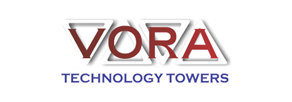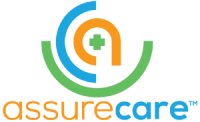
A Vital SMSF Question: Individual Trustee OR Corporate Trustees?

From the last few years, the SMSF trend and statistics have not changed much in time. This includes preferences for individual trustees over corporate ones. The recent reports state that the tax office statistics for SMSF Trustee arrangements indicate that 93% of the SMSFs established in 2015-16 were individual trustees. The percentage has almost remained unchanged since then. Since June 2016, nearly 77% of the SMSFs in existence are individual trustees. Additionally, the ATO trend suggests that most of the SMSFs have individual trustees.
All About SMSF Members and Trustees
A SMSF can be or cannot have four members at one time. They may or may not be from the same family. In case the member is not an employee of another member, then they cannot be related. In principle, the SMSF is similar to being a trust and is run by trustees in two structures: individual capacity and corporate trustee. In both individual and corporate structures, it is the member (s) managing the funds and directors in case of corporate trustees. It is the members who govern the SMSF and its operations.
As per the SMSF Trustee rules, the trustee cannot be paid in concern to their duties. As per the following parameters, the following individuals cannot be considered as individual trustee or a director of any corporate trustee:
- Convicted of any offence for dishonest conduct.
- Subjected to civil penalty as per the superannuation legislation.
- Insolvent or under administration for any undischarged bankruptcy.
- Disqualified from being a trustee of any superannuation fund by ATO.
An Individual Trustee
An individual trustee involves one individual managing the trust. The individual would be entitled to its assets and will legally own the assets. Also, the assets are to be held for the benefit of the beneficiaries.
What are the Advantages of Being an Individual Trustee?
- Low set-up and management costs;
- Relatively simple set up; and
- Lesser obligations to comply with.
While proceeding with the trust set-up, the members must:
- sign the trust deed and a consent form for being a trustee and act as the same.
- be accountable for trust management.
- perform of being a trustee while distributing the beneficiaries.
What are the Cons of being an Individual Trustee?
- the trustee is responsible for the trust’s legal issues.
- difficult to distinguish between the personal assets and the trust’s assets.
- the assets are to be transferred to another individual/trust in case the trustee dies.
The asset transfer involved another entity to undergo documentation resulting in several administrative challenges, in case the former assets include shares and real property viz. land.
A Corporate Trustee
A corporate trustee is like a company acting as trustees of the trust. The company should be a registered one, like other companies. However, it would be incorporated with the sole responsibility of being a trustee, which means that the company is not allowed to perform any corporate operations.
The corporate trustees have shareholders and directors; however, the directors of the corporate trustee are responsible for controlling and directing the trust’s distributions. With multiple members, every member has a role for trust management and complying as trustee.
What are the Advantages of Being a Corporate Trustee?
- limited liability for members because it is a separate legal entity.
- if there are any legal issues, the trust is legally accountable and not the directors controlling it;
- easier bifurcation of the assets as are held in different names;
- greater asset protection;
- simpler control of the trust in the event of demise.
What are the Cons of being a Corporate Trustee?
- additional set-up costs; and
- maintaining records for the entire entity.
By The Way , Do You Know About Your SMSF Contributions?
A Glance for Bifurcation of Individual Trustees & Corporate Trustees
| Individual Trustee | Corporate Trustee |
| 2- 4 members | 1 – 4 members |
| Every member must be a trustee and every trustee must be the fund’ member | Every member must be a corporate trustee’s director and every director must be the fund’s member |
| If any member is an employee of any other trustee, the member and the other trustee need to be relatives | If there are two directors and the fund member is an employee of the other director, the fund member and the other director must be relatives |
| A trust member shouldn’t be an employee of another unless they are relatives | A trust member shouldn’t be an employee of another unless they are relatives. |
| Compulsory of two trustees should be available | Minimum of one and utmost of four directors are necessary |
| One trustee needs to be a fund member | The fund member must be the sole director or one of the two |
| No ASIC fees so lesser establishment costs and ongoing administrative requirements | ASIC charge is required for the first-time registration of a corporate trustee |
| No payment to the trustee for their duties | No payment to the services as trustee and to the directors as their duties for the same |
| In case the individual trustee is removed or added, the members must change the SMSF assets’ titles which may be costly and time-consuming. | Asset record and registration assets are simple particularly when membership changes |
| Administrative penalties are levied on each for the breach of super laws. Eg:
Unable to prepare financial accounts and statements would invite $2,100 penalty amounting to $8,400 for 4. |
Administrative penalties are levied on each for the breach of super laws. Eg: Unable to prepare financial accounts and statements would invite $2,100 penalty |
| In case the trustees changes, the fund is unlikely to continue without any succession plan | In case the members changes, the fund would continue. A corporate trustee continues in the event of a member’s death |
In spite of incurring additional costs and challenges while corporate trustees set up, the benefits of doing so outweigh the disadvantages.









